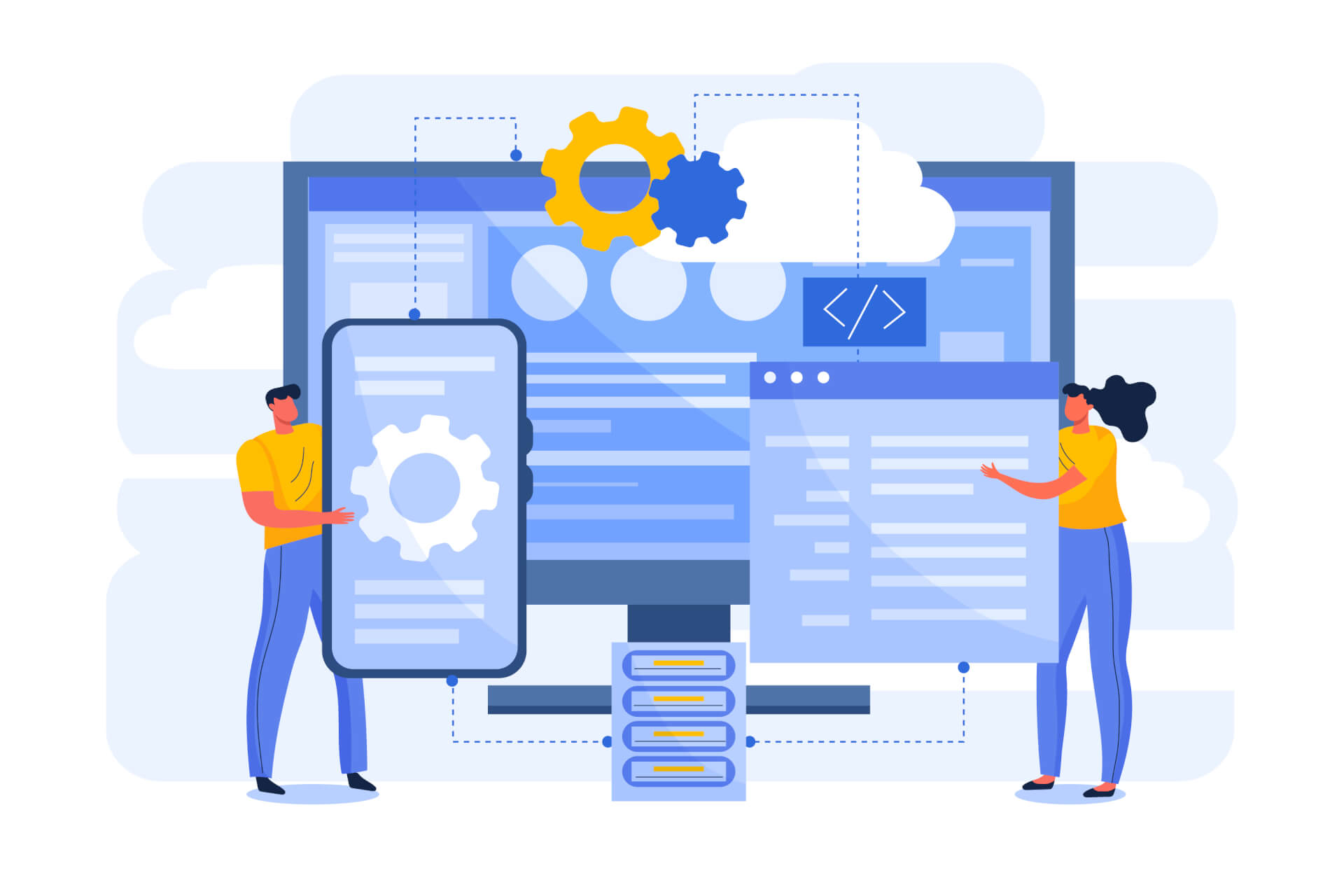For companies, it is of utmost importance to always look for optimized solutions in order to optimize every aspect of their operations.
Online proposal tools have proven to be groundbreaking in the sales and customer engagement sector. However, their true potential is realized when integrated with other software systems.
 This article focuses on the intricacies of integration and explores how online proposal tools harmonize with various software ecosystems to elevate efficiency and productivity to a new level.
This article focuses on the intricacies of integration and explores how online proposal tools harmonize with various software ecosystems to elevate efficiency and productivity to a new level.
Table of Contents
- The Fusion of Tools: Understanding Integration
- Maximizing CRM Synergy
- Increasing Efficiency: Project Management Integration
- Enabling Seamless Collaboration through Integration
- Unlocking Data Insights: Analytics Integration
- Accounting Software Integration
- Prioritizing Security in Integration Processes
- Overcoming Integration Challenges
- Future Trends: Evolution of Integration
The Fusion of Tools: Understanding Integration
 Integration is the core of modern software functionality.
Integration is the core of modern software functionality.
It refers to the seamless connection between different applications, enabling them to communicate effortlessly and exchange data.
For online proposal tools, integration opens up a wealth of opportunities, allowing companies to synchronize their proposal creation process with various other software platforms.
Integration is not just about connecting two tools; it's about improving synergies and eliminating redundancies.
By integrating online proposal tools with CRM systems, project management software, and communication platforms, companies create a unified ecosystem where information flows seamlessly and teams enable more efficient collaboration.
Maximizing CRM Synergy
Online proposal tools and Customer Relationship Management (CRM) systems are a perfect combination in efficiency heaven.
By integrating these two solutions, companies can bridge the gap between sales and relationship management.
Proposal data is seamlessly synchronized with CRM databases, providing sales teams with valuable insights into customer interactions and preferences.
 Reading recommendation: In our blog article "The role of the offer in your sales pipeline" we show how offer tools like Coposal can revolutionize your sales pipeline.
Reading recommendation: In our blog article "The role of the offer in your sales pipeline" we show how offer tools like Coposal can revolutionize your sales pipeline.
Increasing Efficiency: Project Management Integration

By integrating with project management software, workflows are optimized, ensuring that proposals seamlessly transition into actionable projects.
Tasks, schedules, and resources can be easily aligned, promoting collaboration and ensuring project success.
With real-time updates and centralized communication, teams stay synchronized and ensure projects are completed on time.
Enabling Seamless Collaboration through Integration
Integration with communication platforms revolutionizes collaboration. Teams can discuss proposals, exchange feedback, and make real-time decisions, regardless of geographical barriers.
Whether through instant messaging, video conferencing, or document sharing – integrated tools enable teams to communicate effectively and promote synergies and innovations.
Unlocking Data Insights: Analytics Integration

By integrating with analytics tools, valuable data insights are enabled.
Tracking proposal metrics gives companies a deeper understanding of customer engagement, allowing for data-driven decision-making and continuous improvement.
From open rates to conversion metrics, analytics integration provides actionable information, enabling companies to refine their strategies and maximize ROI.
 Recommended reading: In our blog article "The advantages of online quotation tools with advanced analysis functions" we cover the five most important advantages of using online quotation tools with advanced analysis functions.
Recommended reading: In our blog article "The advantages of online quotation tools with advanced analysis functions" we cover the five most important advantages of using online quotation tools with advanced analysis functions.
Accounting Software Integration
Integration with accounting software simplifies financial processes. Proposals seamlessly convert into invoices, eliminating manual data entry and reducing errors.
With synchronized financial data, companies gain better insights into revenue sources and expenses, facilitating informed financial decision-making and compliance adherence.
Prioritizing Security in Integration Processes
 While integration offers countless benefits, ensuring data security is of paramount importance.
While integration offers countless benefits, ensuring data security is of paramount importance.
Implementing robust security measures and compliance protocols protects sensitive information from breaches and cyber threats. Encryption, access controls, and regular audits are essential components of a secure integration framework, building trust with customers and stakeholders.
Overcoming Integration Challenges
Despite its benefits, integration presents challenges. During the integration process, compatibility issues, data migration complexity, and interoperability concerns may arise.
However, proactive planning, thorough testing, and strategic partnerships can mitigate these challenges, ensure a smooth transition, and maximize the benefits of integration.
Future Trends: Evolution of Integration
 As technology advances, so does integration.
As technology advances, so does integration.
The future promises deeper integration capabilities that leverage artificial intelligence, machine learning, and automation to drive efficiency and innovation.
From predictive analytics to autonomous workflows, the integration landscape is poised for exponential growth, offering companies limitless possibilities.
 Recommended reading: A tool to help you optimize customer relationships is Coposal, a comprehensive online quoting tool that goes beyond creating quotes and helps companies manage the entire customer relationship cycle.
Recommended reading: A tool to help you optimize customer relationships is Coposal, a comprehensive online quoting tool that goes beyond creating quotes and helps companies manage the entire customer relationship cycle.
Summary
In summary, integrating online proposal tools with other software systems heralds a new era of efficiency and productivity.
Through the seamless connection of different applications, companies can leverage synergies, optimize workflows, and improve collaboration.
While integration poses challenges, proactive planning and strategic initiatives can overcome obstacles and pave the way for a future where integration knows no bounds. Embrace integration, unlock potentials, and lead your company to success in the digital age.
 Reading Tip: If our article has helped you and you want to learn more about the topic of proposals online, continue reading here: "Future Trends in Online Proposal Management"
Reading Tip: If our article has helped you and you want to learn more about the topic of proposals online, continue reading here: "Future Trends in Online Proposal Management"
Frequently Asked Questions about Integrating Online Proposal Software
Can online proposal tools be integrated into project management software?
Yes, integrating with project management software allows for a seamless transition from proposal creation to project execution, promotes collaboration, and maximizes efficiency.
What security measures are essential for integrated software solutions?
Essential security measures include encryption, access controls, regular audits, and compliance adherence to protect sensitive data from breaches and cyber threats.
How do integrated analytics tools enhance proposal management?
Integrated analytics tools provide valuable data insights, allowing companies to track proposal metrics, refine strategies, and maximize return on investment through data-driven decision-making.
What are the most common challenges in software integration?
The most common challenges include compatibility issues, data migration complexity, and interoperability concerns. However, proactive planning and strategic partnerships can mitigate these challenges and ensure a smooth integration process.
What does the future of integration look like?
The future of integration is characterized by deeper capabilities that leverage artificial intelligence, machine learning, and automation to drive efficiency and innovation, offering companies limitless possibilities.